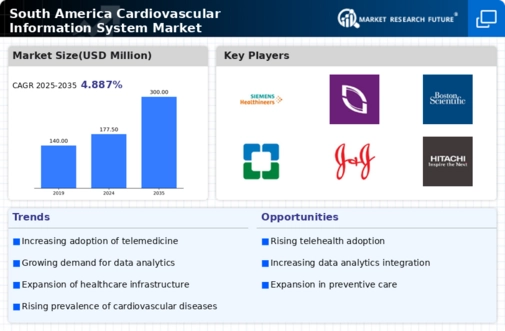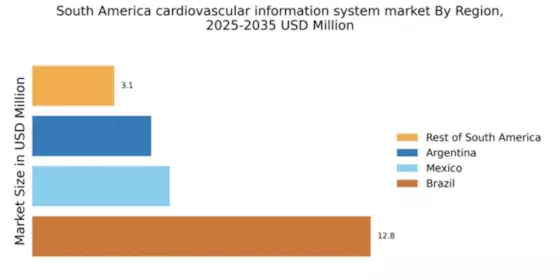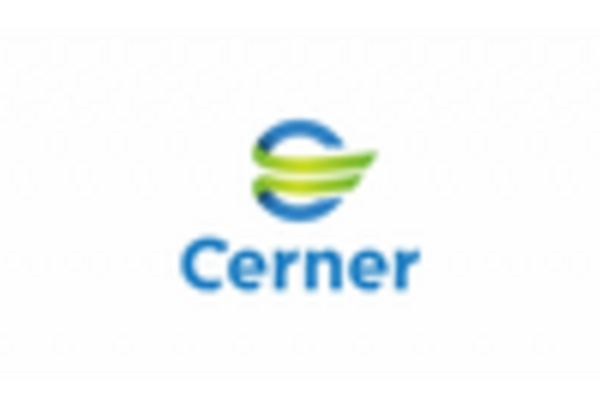Rising Healthcare Expenditure
In South America, increasing healthcare expenditure is a significant driver for the cardiovascular information-system market. Governments and private sectors are allocating more funds towards healthcare infrastructure, which includes the adoption of advanced information systems. Reports indicate that healthcare spending in the region is expected to reach $500 billion by 2026, with a substantial portion directed towards cardiovascular care. This financial commitment enables healthcare facilities to invest in modern information systems that improve patient care and operational efficiency. Consequently, the cardiovascular information-system market is poised for growth as more resources are dedicated to enhancing cardiovascular health management.
Technological Advancements in Healthcare
Rapid technological advancements are significantly influencing the cardiovascular information-system market in South America. Innovations such as artificial intelligence, machine learning, and cloud computing are being integrated into cardiovascular information systems, enhancing their functionality and efficiency. For instance, AI algorithms can analyze patient data to predict potential cardiovascular events, thereby improving preventive care. The market is projected to grow at a CAGR of around 12% over the next five years, driven by these technological enhancements. As healthcare providers adopt these cutting-edge solutions, the cardiovascular information-system market is likely to expand, offering more sophisticated tools for patient management.
Regulatory Support for Health IT Adoption
Regulatory frameworks in South America are increasingly supportive of health information technology adoption, which serves as a catalyst for the cardiovascular information-system market. Governments are implementing policies that promote the use of electronic health records and data-sharing initiatives among healthcare providers. Such regulations aim to enhance the quality of care and streamline healthcare processes. For instance, initiatives that incentivize the adoption of digital health solutions are likely to lead to a more integrated healthcare system. As a result, the cardiovascular information-system market is expected to thrive, driven by favorable regulatory environments that encourage technological integration.
Growing Awareness of Preventive Healthcare
There is a notable increase in awareness regarding preventive healthcare in South America, which is positively impacting the cardiovascular information-system market. As populations become more health-conscious, there is a greater emphasis on early detection and management of cardiovascular conditions. Educational campaigns and community health initiatives are encouraging individuals to seek regular check-ups and utilize health monitoring technologies. This shift towards preventive care is driving healthcare providers to adopt comprehensive information systems that facilitate patient engagement and data tracking. The cardiovascular information-system market is thus likely to benefit from this trend as more patients demand proactive health management solutions.
Increasing Cardiovascular Disease Prevalence
The rising incidence of cardiovascular diseases in South America is a primary driver for the cardiovascular information-system market. According to health statistics, cardiovascular diseases account for approximately 30% of all deaths in the region. This alarming trend necessitates enhanced monitoring and management solutions, leading to increased demand for advanced information systems. Healthcare providers are increasingly investing in technologies that facilitate better patient outcomes through timely interventions. The cardiovascular information-system market is thus experiencing growth as hospitals and clinics seek to implement comprehensive data management solutions to address this public health challenge.


















Leave a Comment